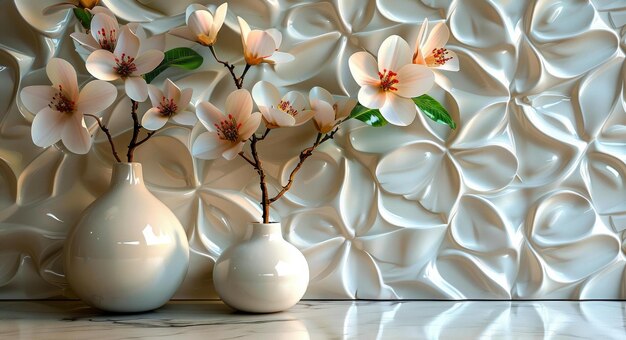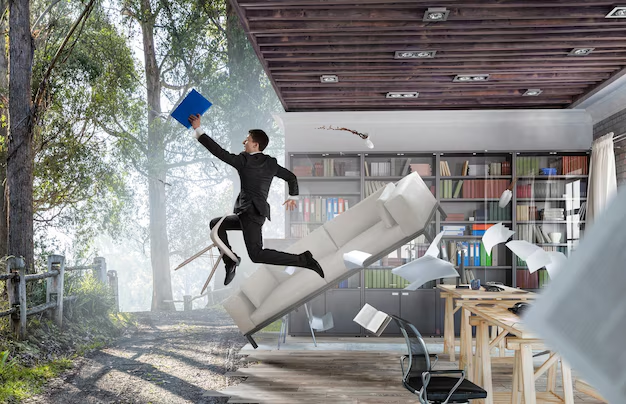In today’s fast-evolving industrial and design landscapes, materials must meet the demands of both aesthetics and functionality. Enter Sodiceram—an innovative ceramic solution infused with sodium-based compounds that’s revolutionizing how we think about construction, design, and environmental sustainability. Unlike conventional ceramics, Sodiceram brings together strength, thermal stability, and chemical resistance without compromising on visual appeal.
This comprehensive blog post explores how Sodiceram is reshaping modern materials, its real-world applications, and why it stands out as the future of ceramic innovation.
What Is Sodiceram?
Sodiceram is a next-generation ceramic material enriched with sodium-based compounds, engineered for high durability, design versatility, and environmental sustainability. These ceramics are not only more resilient under stress but also offer enhanced performance in extreme thermal and chemical conditions. By altering the inner structure during the vitrification process, the sodium additives improve crystalline formation, resulting in reduced porosity and increased toughness.
While traditional ceramics such as porcelain and stoneware have long been the go-to materials for flooring, walls, and decorative finishes, Sodiceram elevates these benefits to a new level. Its unique formulation makes it ideal for both everyday applications and specialized environments like chemical labs, hospitals, and luxury hotels.
A Historical Context: From Ancient Clay to Sodium-Based Innovation
Ceramics have a history that stretches back thousands of years. From the first fired clay pots of Neolithic communities to the delicate artistry of Chinese porcelain, ceramics have always served practical and aesthetic roles. Over time, technological advances led to more precise manufacturing, new finishes, and tougher compositions.
However, it wasn’t until recent decades that the potential of chemical modifications, such as incorporating sodium compounds, began to transform ceramics into high-performance materials. Sodiceram represents the pinnacle of this evolution. It is not merely a continuation of traditional craftsmanship but a reinvention of it, using the latest scientific understanding to meet modern demands.
Unique Features That Distinguish Sodiceram
Sodiceram’s enhanced performance features make it stand out from conventional ceramics. Below is a breakdown of key characteristics:
| Feature | Sodiceram Capabilities | Traditional Ceramic Limitations |
|---|---|---|
| Structural Integrity | High compressive and tensile strength | Moderate strength; prone to cracking under pressure |
| Thermal Stability | Withstands extreme heat and cold (-60°C to 600°C) | Susceptible to thermal shock |
| Chemical Resistance | Resilient to acids, alkalis, and solvents | Often degrades when exposed to chemicals |
| Water Absorption | <0.5%, making it nearly impermeable | Higher absorption leading to potential weakening |
| Surface Finishes | Digital printing, anti-slip, antibacterial, matte | Limited to standard matte or glossy finishes |
| Sustainability | Recycled content, energy-efficient production | Traditional kilns and raw materials |
These core benefits allow Sodiceram to serve high-end, high-performance roles where other materials would fail or deteriorate over time.
Sodium-Based Compounds: The Secret to Superior Performance
The inclusion of sodium-based compounds in Sodiceram marks a significant innovation in ceramic technology. Sodium acts as a flux during the ceramic firing process, reducing the melting point of silica and allowing for better vitrification. This results in a denser, less porous structure that is stronger and more resilient.
Moreover, sodium compounds enhance glaze adhesion, allowing for high-definition digital printing and finishes that mimic natural materials like stone, wood, or metal. These finishes are not only decorative but also functional, resistant to scratches, chemicals, and environmental exposure.
Such advancements expand the potential for ceramics beyond traditional limits, enabling applications in sectors previously dominated by metal, glass, or polymer-based materials.
Where Sodiceram Excels: Applications Across Industries

Sodiceram’s versatility ensures it plays a key role in a wide variety of sectors. Whether you’re designing a luxury interior, building an industrial facility, or upgrading public infrastructure, Sodiceram provides solutions tailored to your needs.
Architecture and Construction
From high-rise buildings to heritage restorations, Sodiceram’s strength and thermal resilience make it ideal for exterior wall cladding, facades, and heavy-duty flooring. Its aesthetic versatility ensures seamless integration with modern or classical design languages.
Healthcare and Laboratories
In medical and research environments, chemical resistance and hygiene are paramount. Sodiceram’s antibacterial finishes and non-reactive surfaces make it perfect for countertops, surgical room tiling, and fume hood linings.
Food and Beverage Facilities
Sodiceram complies with international food safety standards. Smooth, impermeable surfaces prevent bacterial buildup, whiltheirts resistance to aggressive cleaning agents ensures long-term cleanliness in kitchens and production lines.
Public Infrastructure and Urban Design
Public spaces like train stations, airports, and schools benefit from Sodiceram’s slip-resistant coatings, graffiti-proof finishes, and long-lasting visual appeal. It combines functionality with durability for areas with heavy foot traffic.
Interior Design and Art
Designers and artists alike embrace Sodiceram for its unique surface textures and vibrant coloration. It’s a go-to material for customized décor elements, sculptural installations, and signature tile collections in boutique hotels and luxury residences.
The Role of Sustainability in Sodiceram’s Production Philosophy
Sustainability is more than a marketing term for Sodiceram—it is a foundational element of its production process. Recognizing the ecological footprint of ceramics manufacturing, the company takes several measures to reduce its impact.
Raw materials are locally sourced and often include recycled ceramics. Production facilities are equipped with energy-efficient kilns that significantly reduce carbon emissions. Water recycling systems are implemented to conserve freshwater during manufacturing.
Additionally, the long lifecycle of Sodiceram products—due to their resilience and low maintenance—translates to fewer replacements and less waste over time. This makes it a top choice for green building certifications and eco-conscious architecture.
Real-World Success Stories Using Sodiceram
Sodiceram’s exceptional performance and aesthetics have led to its adoption in prestigious projects worldwide. In one case, a luxury hotel in Dubai replaced traditional marble with digitally printed Sodiceram tiles. The result was a visually stunning lobby that required less maintenance and offered better durability.
Another example involves a pharmaceutical lab in Germany, which upgraded its surfaces with Sodiceram due to its non-porous structure and chemical resilience. The change led to improved hygiene standards and a longer material lifespan.
In New York, a public transportation hub used Sodiceram for wall panels and flooring. Thanks to anti-graffiti technology and slip-resistant surfaces, maintenance costs dropped by 40% over three years while improving commuter safety.
Future Innovations in Sodiceram Technology
As material science continues to evolve, Sodiceram is investing in new technologies that promise to take performance and aesthetics even further. Research is currently focused on smart ceramics that can respond to environmental changes, such as adjusting temperature or light reflectivity.
3D printing is also being explored as a way to produce customized, large-format ceramic panels with minimal waste. This approach can revolutionize the way architects and designers work, offering unparalleled flexibility and efficiency.
Collaborations with universities and research centers are underway to develop even more eco-friendly sodium compounds that maintain performance while minimizing environmental impact. These partnerships underscore Sodiceram’s long-term vision of leading the next generation of sustainable, intelligent building materials.
Conclusion
Sodiceram represents the future of ceramic innovation. By integrating sodium-based compounds, it achieves a superior balance of durability, versatility, and aesthetic appeal. This material doesn’t just follow trends—it sets new ones, providing real-world solutions for industries as varied as architecture, healthcare, food processing, and fine art.
Its benefits are extensive: strength, heat resistance, chemical inertness, low water absorption, and customizable finishes. At the same time, its sustainable production methods make it a responsible choice for those who care about environmental impact.
Whether you’re constructing a skyscraper, redesigning an interior space, or fabricating lab equipment, Sodiceram offers performance you can trust and beauty that endures. As new technologies emerge, Sodiceram is poised to remain a frontrunner, continually pushing the boundaries of what ceramics can achieve.
SOA OS23: A New Era of Open System Innovation
FAQs
What makes Sodiceram different from traditional ceramics?
Sodiceram uses sodium-based compounds to enhance structural integrity, reduce porosity, and increase resistance to heat and chemicals, setting it apart from conventional ceramics like porcelain or earthenware.
Can Sodiceram be used in outdoor installations?
Yes, its low water absorption and high thermal shock resistance make it ideal for outdoor applications such as facades, patios, and cladding in diverse climate conditions.
Is Sodiceram environmentally friendly?
Sodiceram is manufactured using recycled materials, energy-efficient kilns, and water-saving methods, making it a sustainable choice for green construction.
How does Sodiceram handle heavy usage in commercial spaces?
Sodiceram is designed for durability and can withstand high foot traffic, heavy equipment, and harsh cleaning chemicals, making it suitable for malls, hospitals, and industrial plants.
Can Sodiceram be customized for specific design needs?
Yes, it supports digital surface printing and texturing, allowing for tailored aesthetics that replicate wood, metal, stone, or abstract designs to suit any interior or exterior style.



